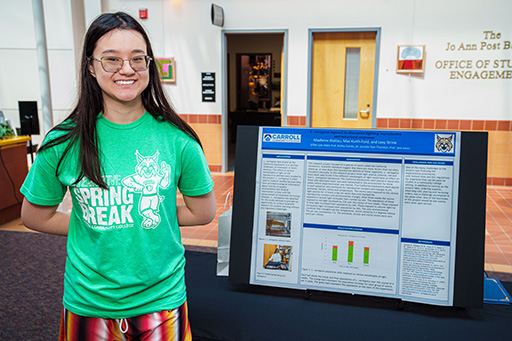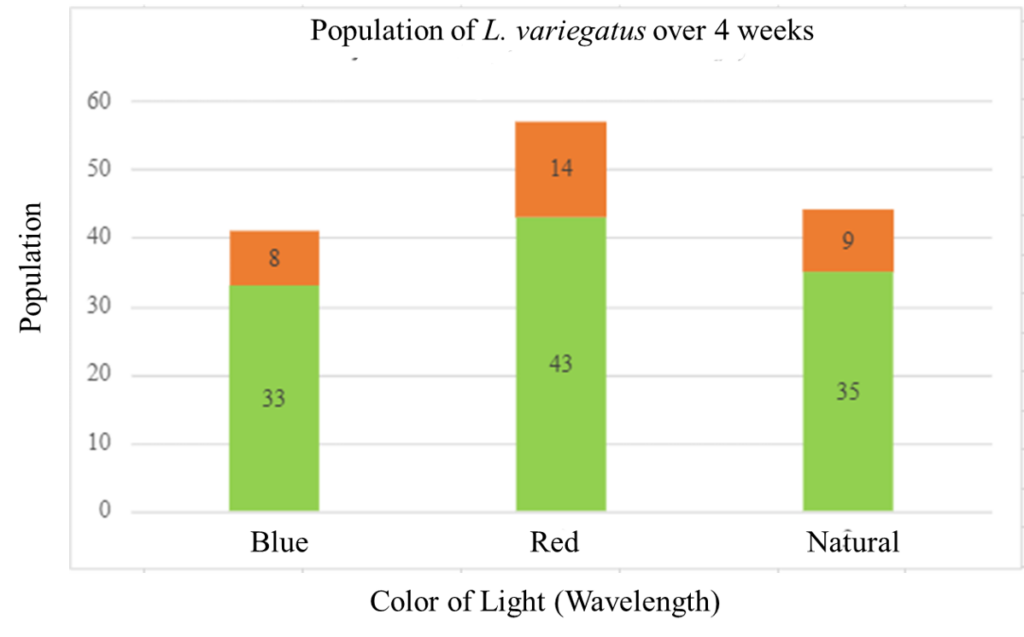STEM-104 Group Project 3
Participants: Madleine Blattau, Max Kurth-Ford, and Lexy Strine
Course: STEM Scholars Research, STEM-104-HN01
Professor: Ashley Combs, Dr. Jennifer Fain-Thornton, Jane Jones
Assignment Title: L. variegatus exposed to alternative lighting: reproductive and behavioral responses

Assignment Details
This research project focused on a species of worm called the California blackworm. Scientific literature suggest that there are many factors that can alter, speed up, or slow down the reproductive abilities of these organisms. L. variegatus reproduce asexually. In this research project three light sources (natural, red and blue) were used to see if the different wavelengths of light would have an effect on how L. variegatus reproduced. The California blackworms were placed in aquariums filled with deionized water and were maintained in this environment for three weeks before experimentation was started. Five California blackworms were placed in each aquarium and monitored for reproductive numbers and changes in pH, ammonia, nitrate, nitrite and temperature. The worms were exposed to the various light sources for 12 hours a day for seven days and checked for reproductive numbers and environmental changes. After three weeks the worms exposed to natural light increased their number by one. The population of those exposed to red light increased by 33% over the course of four weeks. Those exposed to blue light increased their population by 24%. Those exposed to natural light/no extraneous light increased their population by 26%. The only environmental condition that changed was the temperature, which varied by 0.2 degrees Celsius. The pH was consistently 7.6. The ammonia, nitrate and nitrite levels were zero parts per million.
Applications
L. variegatus also known as the California blackworm is a common inhabitant of freshwater in North America. The effect of various wavelengths of light on the reproductive abilities were studied in this project. L. variegatus is often used in research studies because they have provided ecological information about toxicity in aquatic environments and medical information to help with the advancement of treatment for human diseases. L. variegatus was selected for this study because it provides an opportunity to conduct scientific research for student learning without any regulatory challenges.
Results/Conclusions
Each bar shows the initial and final populations of L. variegatus over the course of 4 weeks. The orange bars represent the population increase for each group of worms per 5 tanks. The green bars represent the population at the start of the experiment.

Challenges and Successes
One of the many challenges in the project was finalizing the experimental procedures, with limited time and the regulations for organisms that can be used for studies in a community college setting. In addition to coming up the project idea, ordering supplies, observing cost, placing and receiving orders, was a challenge accomplish in the given time. One of the successes of the project would be the worms were alive upon arrival.